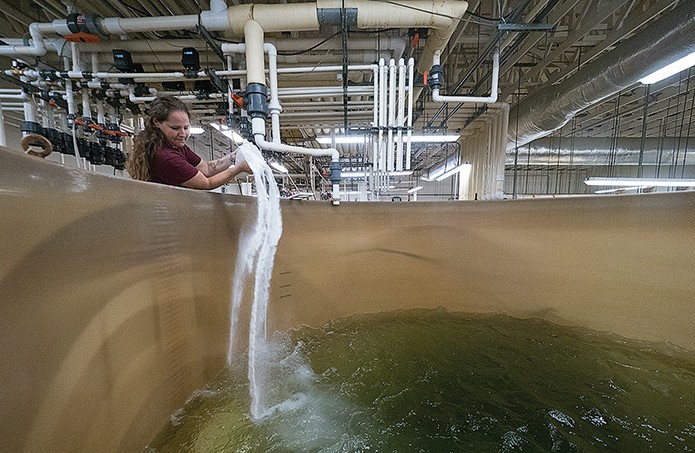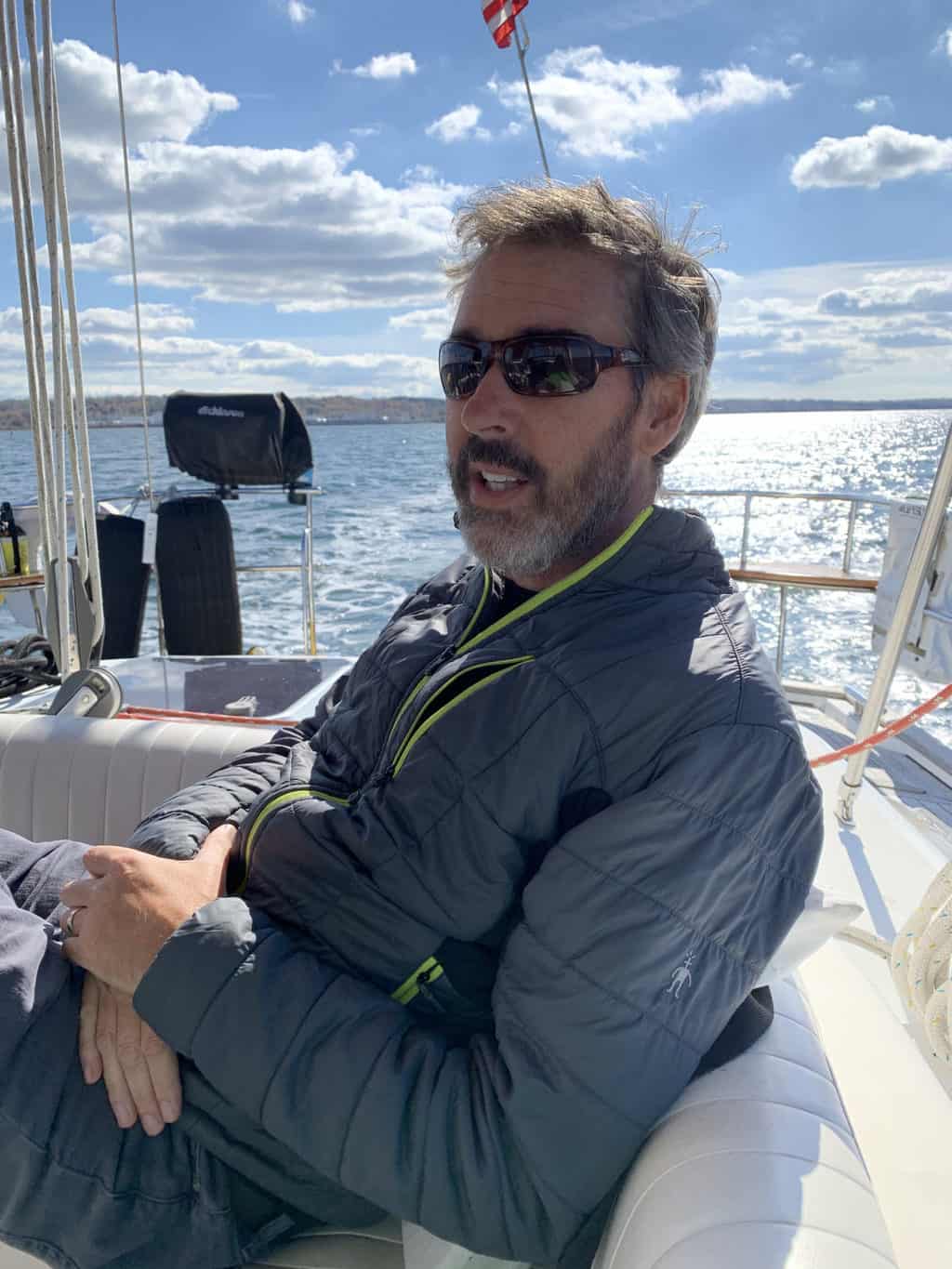By Jeremy Cox, Chesapeake Bay Journal
Producing billions of baby oysters is technical stuff. At the Horn Point Lab oyster hatchery, it takes thousands of parent oysters, massive water tanks, an algae greenhouse, computer-controlled feeding equipment and a brigade of interns.
By February of this year, everything was in place for another fruitful spawning season. Everything, that is, except for one of the most basic ingredients: salt.
Oysters require a bit of brine — about 10 parts per thousand will do — to survive and reproduce.
Since 1973, when it was founded, the University of Maryland Center for Environmental Science facility had always gotten all of the salt it needed from the Choptank River, which flows right outside its door. But last year’s record-breaking rainfall flushed away virtually any hint of salt from the Eastern Shore river.
Up and down the Chesapeake Bay, oyster hatcheries like Horn Point near Cambridge have been hit with severely reduced salinity concentrations. Hatcheries are the reproductive engines for public oyster restoration efforts and private oyster farming.
About 65% of the young oysters produced at Horn Point are destined for sites where officials are trying to rebuild the population.
“We’ve had low salinity in the past, but we’ve always had an uptick in the fall and the winter,” said Stephanie Tobash Alexander, who manages the Horn Point hatchery. “This is the longest low-salinity period that we’ve encountered.”
The problem delayed the production of baby oysters by a month or longer. While the problem isn’t expected to dent this year’s oyster market, it could lead to a drop-off in the number of oysters available to consumers in two or three years, when the current class of baby oysters reaches maturity, industry members say.
The issue is more pressing for oyster restoration projects. Those, too, have been put on hold until the young oysters, known as spat on shell, are ready to plant. Unless hatcheries can somehow make up for lost time, there won’t be as much spat to go around this year, said Chris Judy, head of the Maryland Department of Natural Resource’s shellfish division.
This year’s salinity squeeze also could be a sign of things to come. As climate change unleashes wetter winters and springs in the region, the aquaculture industry may have to adapt to survive, Alexander said.
“I would like to think this [year] is a blip, but I don’t know,” she added.
In 2017, Maryland’s aquaculture industry harvested 74,000 bushels of oysters, a 13% increase over the previous year. The wild harvest topped 213,000 bushels that year.
At the Little Wicomico Oyster Company in Heathsville, VA, owner Myles Cockrell said his oyster-farming operations are “a little behind” because of the delay in getting young oysters. He buys from several of the region’s hatcheries — wherever he can find them.
“From what I’ve heard it’s been a slow start for everybody,” Cockrell said. “That’s going to be a little bit of a challenge later on.”
Toward the end of last year, it often seemed like the rain wouldn’t let up. Nearly 72 inches of rain pummeled Baltimore in 2018, crushing the previous single-year record of 62 inches set in 2003. The 63 inches that fell on Richmond marked the second-wettest year in that city’s history.
That glut of freshwater poured into the Bay’s rivers and streams. The high flows kept the influence of salty ocean water at bay. As recently as the end of May, the salinity concentration at Horn Point’s lab was still a notch below 6 parts per thousand.
Typically, the lab dredges oysters from nearby sanctuaries to use as brood stock. But the oysters in the Tred Avon, Choptank and Nanticoke rivers were in no shape to start spawning earlier this spring because they were under stress from the ultra-low salinity conditions.
“Having a long-term low salinity has our oysters in this lower state of reproductive readiness,” said Mike Roman, the lab’s director. So, the hatchery’s staff had to travel farther south to the Manokin River to find enough healthy oysters.
Horn Point and some other hatcheries, particularly in the more freshwater area of the mid-Bay, were forced to postpone shipments of young bivalves by as much as a month into mid-June. Many had no choice but to purchase tons of salt to add to their water tanks, an unprecedented step for most.
Such was the case nearly as far south as the mouth of the Bay, where the water is normally almost as salty as the open ocean. But at Ward Oyster Company on Mobjack Bay on Virginia’s western shore, hatchery managers had to shake some salt into their water for the first time this year as salinity levels tumbled from 18–21 ppt to 10–12 ppt.
The first batch of young oysters still fared poorly, owner John Vigliotta said. The cause remains mysterious.
“We’d spawn them and they’d look OK, and they’d just fizzle out,” he said.
Hoopers Island Oyster Company, a private hatchery not far from Horn Point, was at least a month behind schedule this year, with no shipments expected until around the end of June. To combat low salinity, the facility was adding some salt but mostly relying on drawing in water during high tides and periods of minimal wind, when salt concentrations are at their zenith.
Will hatcheries be able to offset impacts from the delay? “I think that depends on how willing you are to slam on the gas pedal,” said Natalie Ruark, Hoopers’ hatchery manager.
It’s unclear whether Horn Point will be able to make up for lost time this year, but, Roman said, his staff will try. Last year, the facility churned out nearly 1.3 billion oyster larvae.




